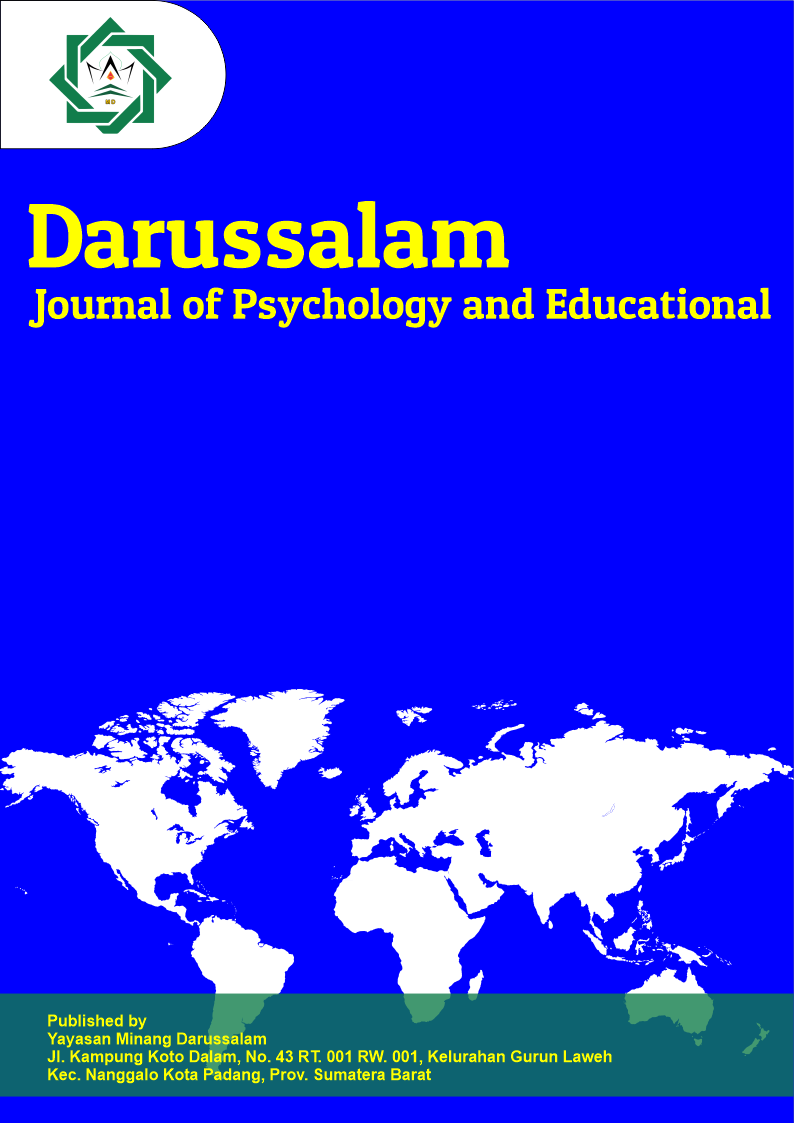Optimizing the Metacognitive Ability of Intelligent Deaf Children Through Innovative Learning
Main Article Content
Abstract
This research aims to optimize the metacognitive abilities of intelligent deaf children through innovative learning. This study uses a qualitative approach with a focus on literature analysis and learning practices. The results of the study show that deaf children have special challenges in the development of metacognitive skills, which has an impact on their learning ability. Innovative learning, including vocational learning, effective sign language teaching, and the implementation of the Multiple Intelligences theory, has been shown to improve the metacognitive abilities of deaf children. Strategies such as the use of visual aids, intensive non-verbal communication techniques, and individualized learning approaches were found to be effective. This research also reveals the importance of the role of teachers in developing special skills to teach deaf children. In conclusion, the optimization of the metacognitive abilities of intelligent deaf children can be achieved through the application of innovative learning methods tailored to their specific needs.
Article Details

This work is licensed under a Creative Commons Attribution-ShareAlike 4.0 International License.
References
Alvarado, J. M., Puente, A., Jiménez, V., & Jiménez, A. (2012). Using a Test Adapted to Sign Language to Assess Metacognitive Skill of Deaf Students. Procedia - Social and Behavioral Sciences, 46, 1353–1357. https://doi.org/10.1016/j.sbspro.2012.05.301
Ana Rafikayati, & Muhammad Nurrohman Jauhari. (2021). Studi Tentang Pembelajaran Vokasional Bagi Anak Tunarungu Di SMPN 28 Surabaya. SPECIAL?: Special and Inclusive Education Journal, 2(1), 77–83. https://doi.org/10.36456/special.vol2.no1.a3888
Bakken, J. P., & Obiakor, F. E. (2018). Viewpoints on interventions for learners with disabilities: An introduction. Advances in Special Education, 33, 1–12. https://doi.org/10.1108/S0270-401320180000033001
Bintoro, T., Fahrurrozi, Kusmawati, A. P., & Dewi, R. S. (2023). The teacher strategies in teaching sign language for deaf students in special schools Jakarta. Cogent Education, 10(2). https://doi.org/10.1080/2331186X.2023.2258294
Development, I. (2018). Improving Deaf and Hard of Hearing Students’ Achievements Using STS Approach: A Literature Review Atika, I. N. 1 , Ediyanto 1 , and Kawai, N. 2 1. 2(January), 19–30.
Emmorey, K., Mccullough, S., Mehta, S., Ponto, L. L. B., & Grabowski, T. J. (2011). Sign language and pantomime production differentially engage frontal and parietal cortices. Language and Cognitive Processes, 26(7), 878–901. https://doi.org/10.1080/01690965.2010.492643
Felicite, M. D. (2021). Glimpse in the World of Deaf People: Deafness and Deaf Education. IJSSHR-International Journal of Social Science and Humanities Research, 4(01), 12–30.
Gehret, A., & Elliot, L. (2023). Abstract 162: Perceptions of e-Learning by Deaf and Hard of Hearing Students Using Asynchronous Multimedia STEM Tutorials. Journal of Biological Chemistry, 299(3), 103482. https://doi.org/10.1016/j.jbc.2023.103482
Khairun Nisa, Mambela, S., & Badiah, L. I. (2018). Karakteristik Dan Kebutuhan Anak Berkebutuhan Khusus. Jurnal Abadimas Adi Buana, 2(1), 33–40. https://doi.org/10.36456/abadimas.v2.i1.a1632
Matien, S. S. (2003). PEMBELAJARAN BERBASIS MULTIPLE INTELLIGENCES PADA SISWA TUNARUNGU DI SEKOLAH INKLUSI ( Studi Deskriptif Tentang Pembelajaran Siswa Tunarungu kelas II SD Mutiara Bunda Bandung ). 50–61.
Naglieri, J. A., Welch, J. A., & Braden, J. (1994). Performance of hearing-impaired students on planning, attention, simultaneous, and successive (PASS) cognitive processing tasks. Journal of School Psychology, 32(4), 371–383. https://doi.org/10.1016/0022-4405(94)90034-5
Nofiaturrahmah, F., & Kudus, I. (2018). Dan Cara Mengatasinya. Rumah Jurnal IAIN Kudus, 6, 1–15.
Quinto-Pozos, D., Singleton, J. L., Hauser, P. C., Levine, S. C., Garberoglio, C. Lou, & Hou, L. (2013). Atypical signed language development: A case study of challenges with visual-spatial processing. Cognitive Neuropsychology, 30(5), 332–359. https://doi.org/10.1080/02643294.2013.863756
Wahid, M. G. N. (2020). Pendekatan Pembelajaran Akhlak Pada Anak Tunarungu Di Sekolah Luar Biasa (Slb). Ta’limuna, 9(01), 52–70.
Whitaker, R., & Thomas-Presswood, T. (2017). School Psychological Evaluation Reports for Deaf and Hard of Hearing Children: Best Practices. Journal of Social Work in Disability and Rehabilitation, 16(3–4), 276–297. https://doi.org/10.1080/1536710X.2017.1372242

